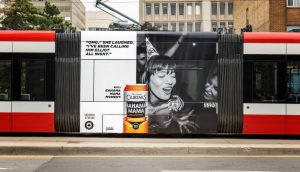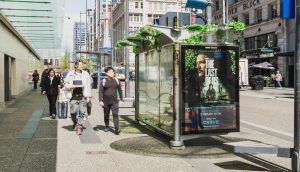
Peter Field says he’s had a lot of people knocking on his door lately (metaphorically, as physical distancing rules are in place).
“Suddenly all anyone wants to talk about is downturns and recessions,” the U.K.-based consultant tells MiC.
That’s because more than a decade ago, Field authored a white paper based on numerous studies that indicated the importance of advertising in a downturn. Sparked by the 2008 global recession, the white paper used data from the likes of Millward Brown, Data2Decisions and IPA/NTC Economics.
The findings pointed to one key conclusion: that brands should continue investing even amidst a downturn. The white paper has been circulating across professional networks once again, he says, and suddenly he’s having some very familiar conversations.

Some of the data presented included Millward Brown’s findings that brand usage and brand image suffered considerably when companies ceased spending on communications for a period of six months or more (see above).

Ge acknowledged that some may have no choice but to cut spend, even if they know they shouldn’t. In that case, he says, it’s better to halve spend in year one, than to cut it out completely. The chart above shows a case study with an unidentified CPG brand — halving the budget in year one, versus cutting it entirely, means return to normal ROI in three years, as opposed to five years.
He says there are brands that have seemingly learned from the last major economic downturn. “The big sophisticated multinationals – the P&Gs, the Unilevers of the world, a lot of the big automotive manufacturers, they’d all gotten back to realizing that they needed to invest in brands again. We were on quite the positive trend.”
He worries that as marketing dollars become tight, brands will become too short-term focused and not see the value of riding out the storm. “What often happens is during recessions, some marketers, particularly inexperienced ones, cut their ad spend. The problem is, it fixes a short-term deficit with potentially long-term impacts. It doesn’t maintain future sales.”
Field admits that there are things that separate the COVID-19 pandemic from the financial crisis of 2008. While 2008 saw a major tightening of purse strings, this is seeing many businesses also physically unable to sell products in traditional ways. “The big worry is any category that is a discretionary purchase will take a really bad hit,” he says. “There’s the massive panic buying as well, which is very different from previous recessions.”
And, he says, it is harder on some categories than others. “If you’re an airline, a hotel or a restaurant business, in previous downturns, you’d be hit, not hammered. So if you’re in those categories, yes, you’ve got to conserve cash, you’ve got to do anything you can to survive.”
But in most other sectors, he says, that’s not at all the case. And for those categories, he has some advice: spend, and be smart about where you’re spending.
“We know that some media are better at driving long-term growth than others. You want to look at the more emotional vehicles,” says Field. “Video is particularly strong, and TV has always been the most powerful in long-term building. Digital media, online media, those are more geared toward short-term messaging.” And if you’re a CPG brand or selling some of the grocery goods people need to buy right now, he says, maybe that’s where you need to be — but digital is not as effective as video-driven mediums to accomplish long-term goals.
He adds that outdoor media is also strong for long-term brand building and is also effective further along in the purchase journey, such as in the consideration stages. But that presents a potential problem, he acknowledged, as restrictions on gatherings and a hesitancy to use public transit has left some streets utterly deserted.
But Kevin McDonald, CEO of OOH-specializing agency Kinetic, says there’s still been a willingness to spend among agency clients.
“Almost all of our clients have maintained the spend. We have only had one client cancel, which is pretty amazing. Some of our biggest clients have stayed in market just to make sure that the brand messaging is there.”
Those clients are aware the audience is less, he says. “But when the market comes back — and it will — we’re optimistic.”
In McDonald’s conversations with other agency CEOs and directly with clients, he says that, as a company, many are looking at a two- to three-month pause on the business, but he’s looked to China, where things are now easing back into normal routines and has seen OOH activity pick up. “Once this is behind us, I actually think we’re going to have a hard time finding inventory, because everyone is going to want to be outside so much.”






















